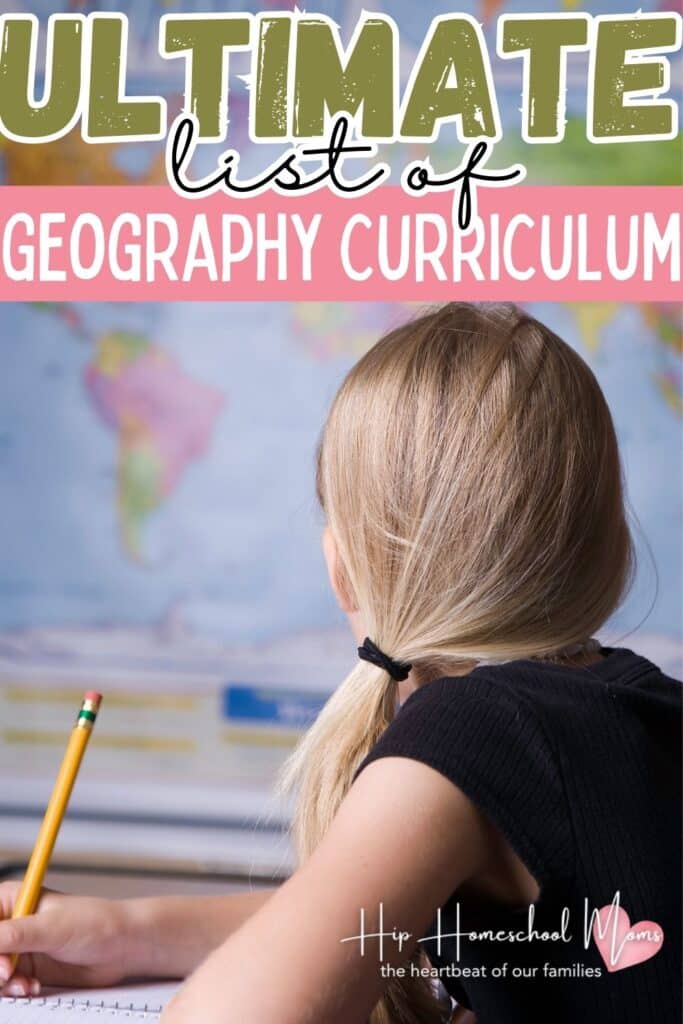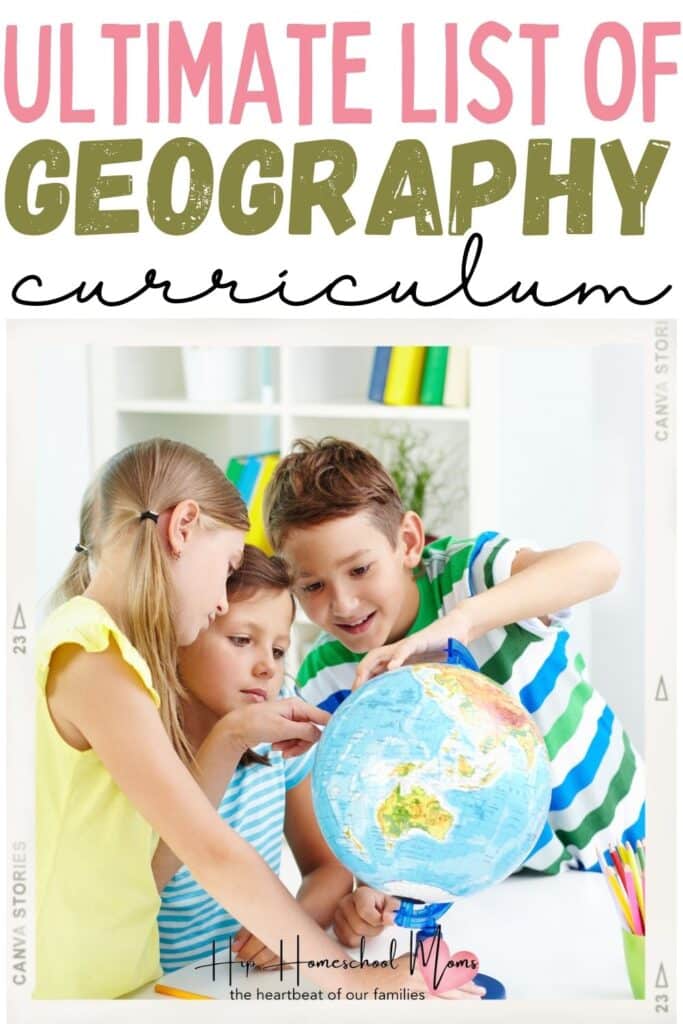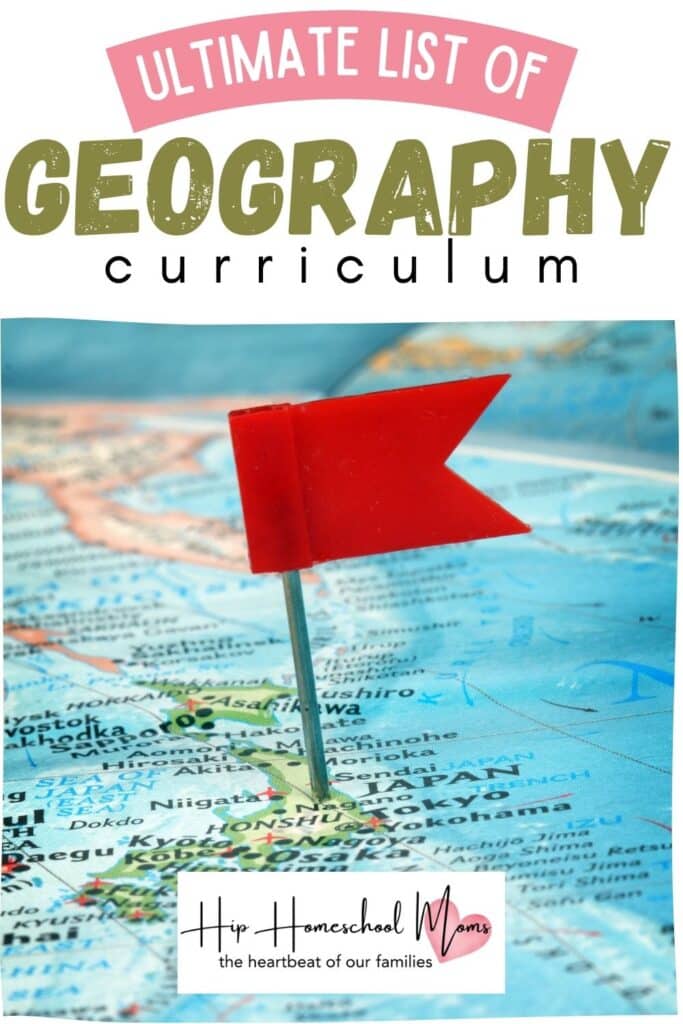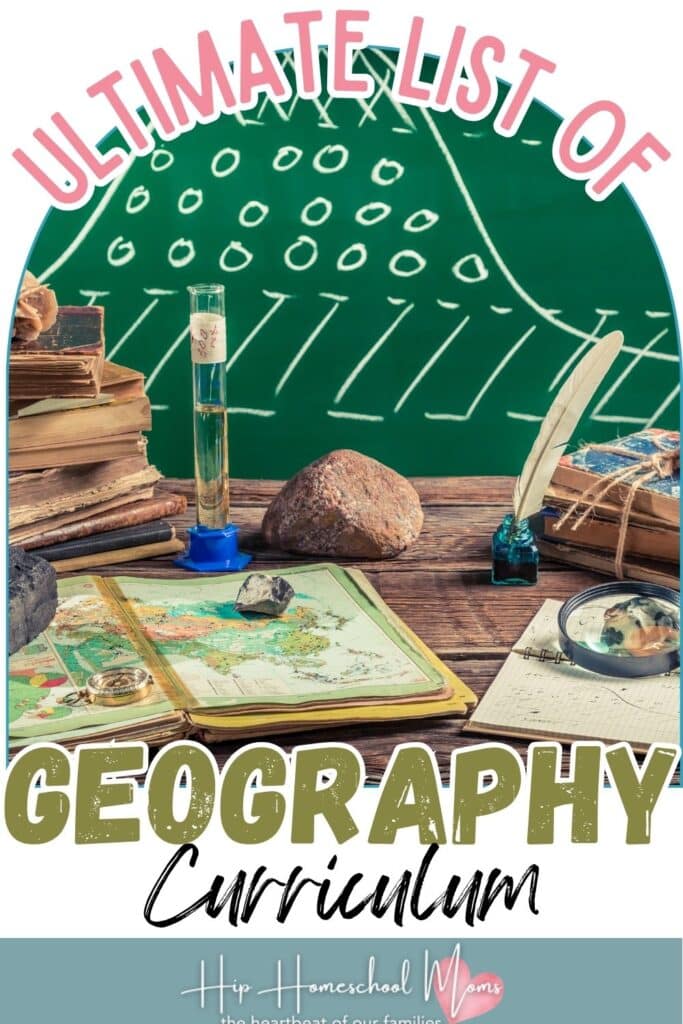Geography Curriculum: Ultimate Homeschool List
A Homeschool Mom’s Guide to Teaching Geography
As homeschool moms, we wear many hats, and one of them is that of a geography teacher. While it might not be the first subject that comes to mind when planning our curriculum, teaching this subject to our children is a crucial part of their education.
Not only does it help them understand the world around them, but it also fosters a sense of curiosity, empathy, and appreciation for different cultures and environments.

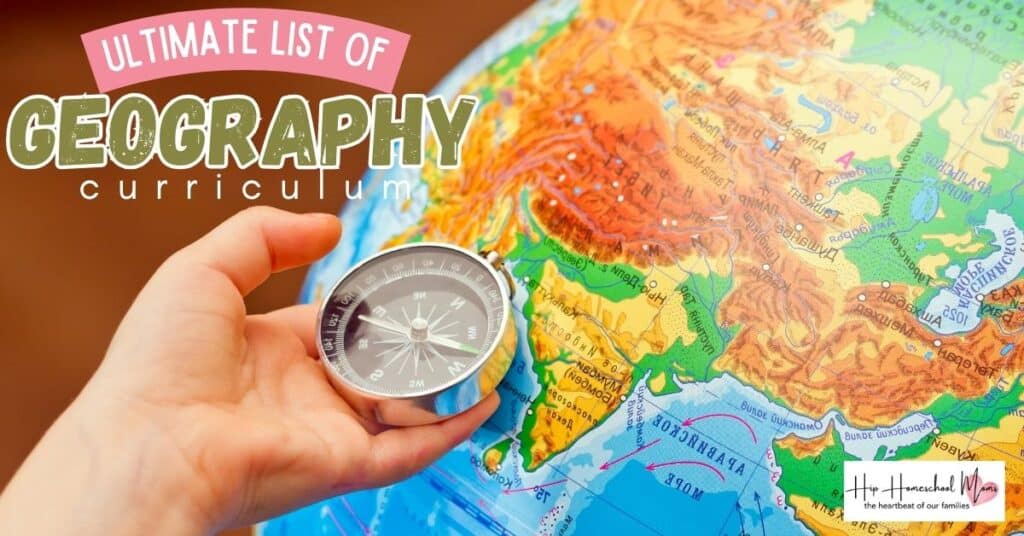
Why Teach Geography?
Geography is more than just memorizing maps and capitals; it’s about understanding the interconnectedness of our world. By learning about different countries, landscapes, and climates, children develop a broader perspective and a deeper appreciation for the diversity of our planet. This subject also helps them understand how humans interact with their environment, which is essential for fostering environmental stewardship.
Why Teach Geography
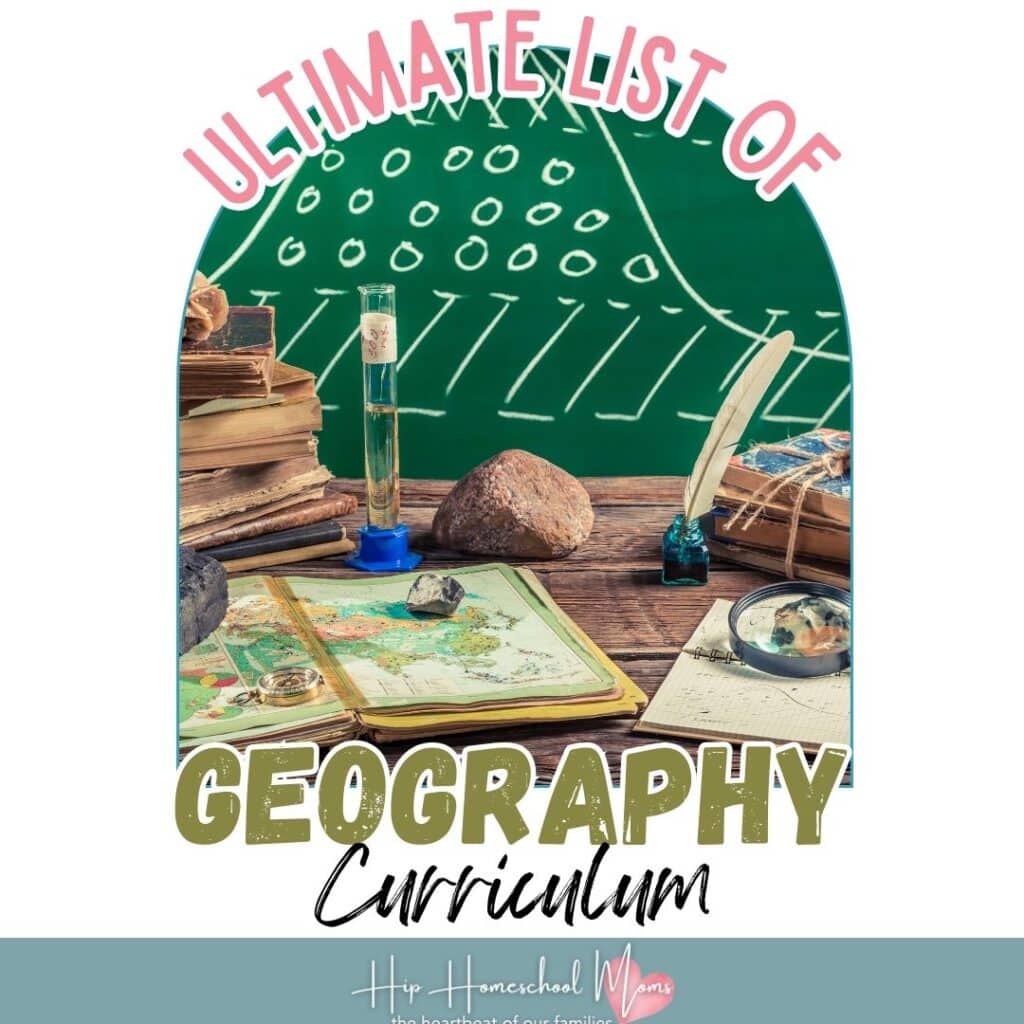
Tips for Teaching Geography
As with any other subject we teach to our kids, we want to ignite curiosity, make learning fun, and provide a solid foundation for their future!
Start with the basics:
Begin with simple concepts like continents, oceans, and basic map skills before diving into more complex topics. Here are 5 Amazingly Simple Ways to Study World Geography Every Day.
Make it interactive:
Use maps, globes, and atlases to make learning tangible. You can also incorporate games, puzzles, virtual tours, and more to learn geography through play. You can also Get Hands-On with History and Geography Using Pin-It Maps.
Here are a lot more Educational Geography Games and Activities.
Relate it to real life:
Connect geography lessons to current events, historical events, or personal experiences to make them more meaningful.
Encourage exploration:
Let your children explore topics that interest them within the realm of geography. This could be anything from studying a specific country to learning about natural disasters.
Teaching geography to your homeschool children is not just about learning facts and figures; it’s about nurturing a global mindset. By understanding the world around them, children can develop a sense of responsibility towards the planet and its inhabitants.
So, keep that in mind as you explore our ultimate list of geography curriculum options. Before we dive into the list, though, remember that one of the freedoms of being a homeschooling family is that you don’t need to have a single approach to teaching. For more on this topic, check out this post from our sister site: Curriculum-Free Geography? How to Get It Done and Have Fun!
[Note: we’ll be adding to our ultimate geography curriculum list regularly, so please let us know if there is a good curriculum we forgot to add!]
Preschool and Kindergarten
Montessori Science and Geography Workbook: Continent Studies, Physical Science, Botany and Zoology. This workbook also includes science lessons and is ideal for teachers of children ages 3 or 4 and older. The section that teaches about the world’s landscape includes information on: “Land, Water and Air” as well as “Land and Water Forms.” It also teaches about “Animals, Flags, Landmarks, Music and Books” on different continents.
Around the World Coloring Book: Great for homeschoolers, this educational coloring book helps children identify and locate 30 countries of the world, including Nigeria, Argentina, Mexico, India, Saudi Arabia, France, Spain, and more. Kids will explore a map of each country, which provides information such as the names of major cities, the national flag, and interesting landmarks, natural resources. Fun facts and statistics about each country. It can be used by preschoolers all the way up to early elementary-aged students.
Geography Pre-K: This workbook by DK is full of fun yet attainable exercises to introduce your children aged 3 to 5 to the fascinating world in which we live. Activities and exercises will help them explore world maps and learn about our world’s land masses, oceans, rivers, and other landscapes.
Check out these Free and Low-Cost Geography Printables for young students.
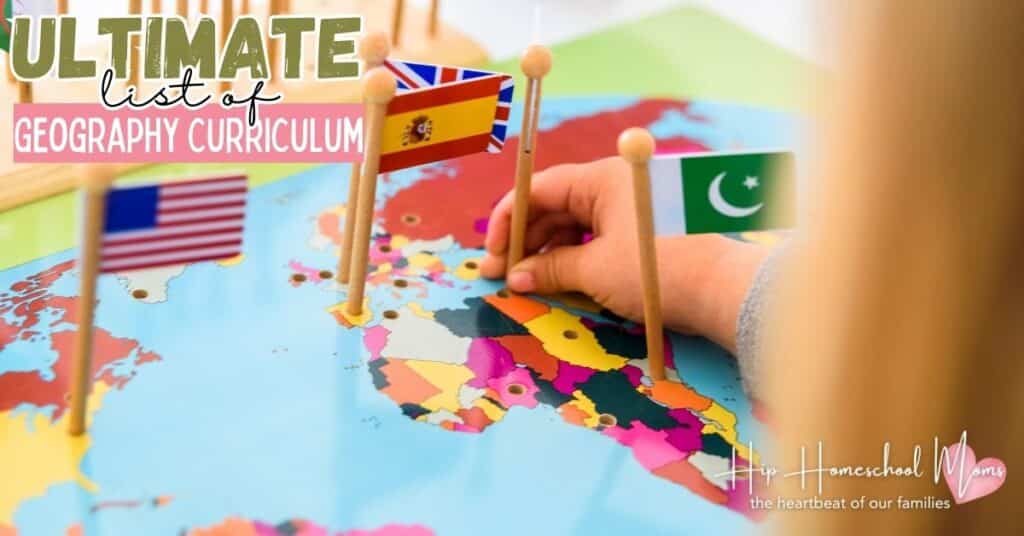
Lower Elementary (Grades 1 – 3)
My First Grade Geography Workbook: 101 Games & Activities to Support First Grade Geography Skills
Geography, First Grade: Another DK workbook, this one is for kids aged 6 to 7, and is full of a variety of learning exercises to support and expand your student’s knowledge of the world, including: the seven continents, countries and their capitals, the U.S. and its 50 states, state capitals, and more.
Geography, Second Grade: This DK Learn and Explore Book is for ages 7 to 8 and will expand their knowledge alongside new topics such as learning about map grids and the compass rose. Children will also explore physical and political maps, and the hemisphere. You’ll find a section with solutions, tips and guidance for you, the homeschool parent.
Grade 2 Daily Geography Practice: For second graders, this offers basic skills and terminology on the subject, and teaches about: globes, compass roses, map keys and grids, a variety of maps—including road and street maps, rural, suburb, city, and state maps, population maps, weather maps, and more.

Upper Elementary (Grades 3 – 6)
Complete Book of Maps and Geography Workbook: This workbook will teach upper elementary students (3rd through 6th grade) about the regions of North and South America, including the United States, as well as map skills, and time zones. This 400+ page workbook is full of engaging and educational activities.
Carson Dellosa: The Complete Book of Maps and Geography Workbook: Also for grades 3-6 (ages 8-12, approximately), you can launch your kids into social studies focused on state, regional, and global geography as well as map skills and other activities. This workbook is over 350 pages and will help your kids practice geographical skills, interpret maps, and analyze data as they enhance their knowledge through hands-on activities, reviews, and more.
The next few books are Spectrum Workbooks. Spectrum is geared for parents who want to help their children meet and exceed set learning goals via workbooks. They are a terrific resource for homeschooling families.
Spectrum Geography 4th Grade Workbook: For ages 9 to 10, this workbook teaches about the regions of the United States, adding cultural and natural American history and US map skills through over 100 pages of fun and engaging activities, including “Reading a globe,” learning about World War II and Pearl Harbor, “locating volcanos,” and more.
Spectrum Grade 5 US Geography Workbook: Your students ages 10 to 11 will learn more about American history, ecology, and US map skills with this workbook. They’ll learn about how to understand data in charts, be able to do an at-home energy audit, and much more. An answer key at the end will help you to track your child’s progress.
Spectrum Grade 6 Geography Workbook: In 6th grade, their homeschool curriculum will expand into worldwide subjects including international current events, world religions, migration world history, and of course a world map.
Trail Guide to World Geography is a multi-level curriculum designed for the homeschool family juggling several grades. You can read more about it here: Trail Guide Curriculum.
Here is another multi-grade curriculum that allows you to discover the world through art.
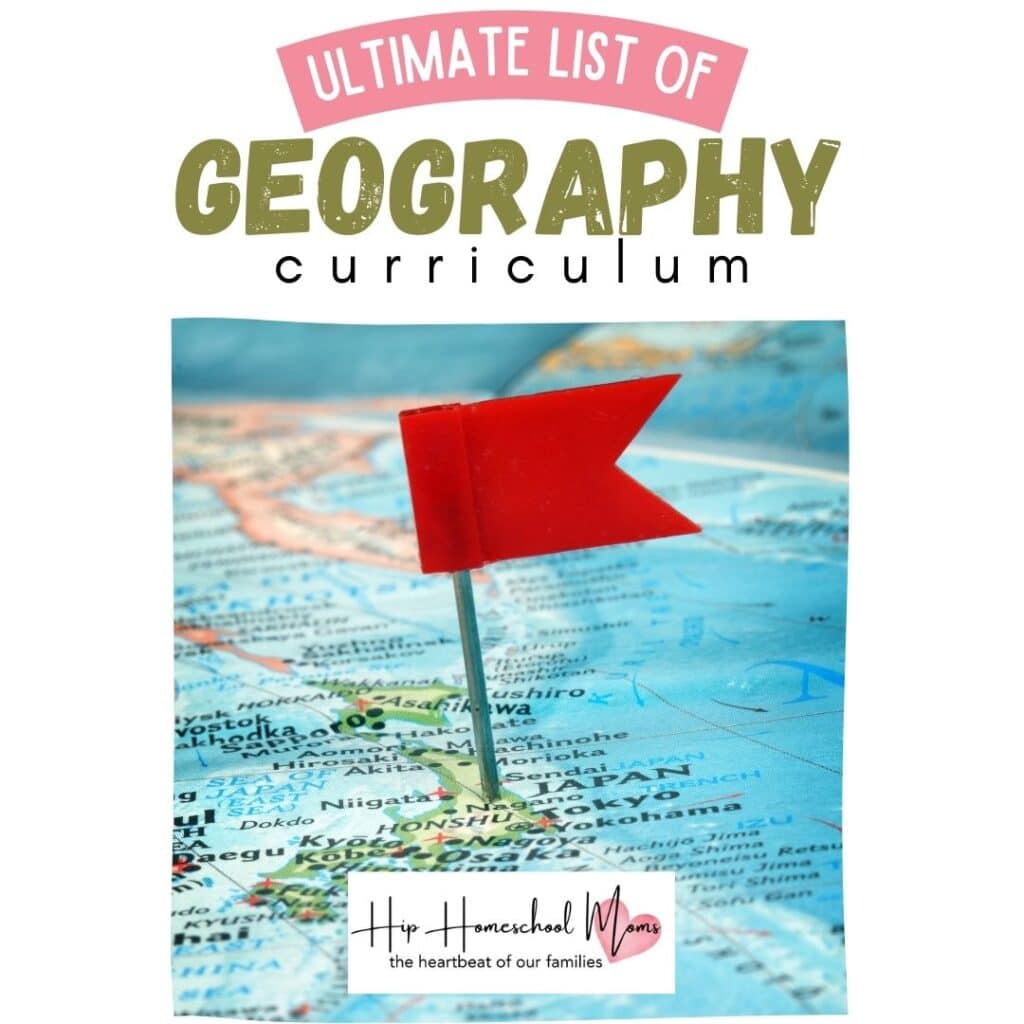
Middle School (Grades 6 – 9)
Mark Twain Geography Workbook: For kids in grades 7-8, this workbook will teach kids about population, climate, and the political and physical geography of the eastern hemisphere.
180 Days of Geography for Sixth Grade: An augment to another curriculum, this offers engaging daily practice to help your child build geography skills.
Notgrass Geography: If you are teaching your kids this vital curriculum, you really can’t go wrong with Notgrass—and you’ll want to read this comprehensive US Geography with Notgrass review by a homeschool mom and blogger.
High School (Grades 9 – 12)
World Geography – This curriculum is geared specifically for homeschooling families. It is a curriculum for high school students who are completing the graduation guidelines for their state while homeschooling. The author has incorporated a 4-week study of the students’ DNA to learn where they come from. This unique addition makes the course more personal to the student, and it’s a prerequisite to World History.
High School World Geography by PACworks: Treat your high schoolers to a study of the six basic geographic regions of the world: North America, South America, Europe, Africa, Asia, and Oceania. Each chapter covers 15 topics including borders, terrain, climate, vegetation and wildlife, famous sites and events, ethnicities, languages, religions, transportation, government, diplomacy, economics, natural resources, and industry. Your teens will also learn about famous places including pyramids, castles, canyons, tourist attractions, mountain ranges, and islands. This course is designed for one transcript credit.
Grade 9 World Geography: This curriculum by Accelerated Christian Education (ACE) has been around for decades, and has Scripture as its foundation, fully integrating biblical principles, wisdom, and character-building concepts into education. Students move at their speed through the self-instructional “PACE” workbooks, but it should take them about the length of one school year.
BJU Press Geography Grade 9 Student Activity Manual: This is designed to be used with the student textbook, this activity manual expounds upon the text lessons with colorful map and chart activities, chapter review questions, reading passages with comprehension questions, internet research activities, and more. The answers can be found in the Activity Manual Teacher’s Edition.
World Atlases
Merriam-Webster’s Student Atlas – Features full-color physical, political, & thematic maps
National Geographic Concise Atlas of the World – Features maps of the world, every continent, and the United States (including physical and political details and boundaries), key data for each continent, plus flags and facts for every country
Where on Earth? A DK Atlas – a collection of more than 75 3D maps that show not only where everything is, but also why it is there
You Might Also Enjoy:
- 9 Reasons to Love Geography
- 10 Hands-On History and Geography Activities for Kids
- Exploring the World with Google Earth
- Continent Maps Stitching Activity
Featured Photo by Anna Shvets

